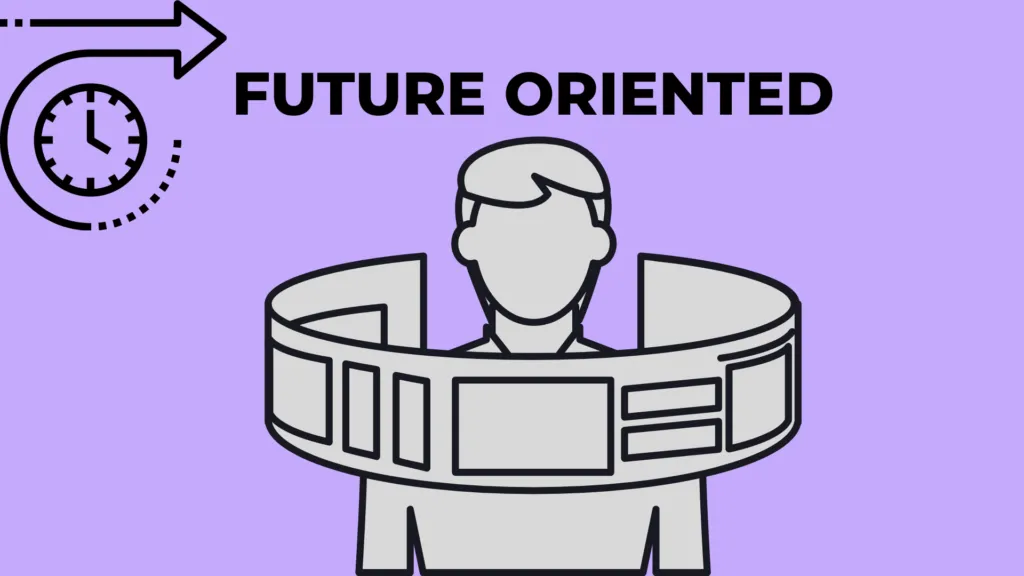Cover Letter Secrets
In the competitive world of job applications, a well-crafted cover letter can be your secret weapon. It’s your chance to make a strong first impression, go beyond your resume, and show potential employers why you’re the perfect fit for the role. Many job seekers overlook the importance of cover letters, but this document is your opportunity to demonstrate your personality, passion, and specific qualifications in a way that a resume simply cannot. This guide will delve into the secrets of cover letter writing, providing you with the knowledge and tools to create a compelling letter that grabs attention and increases your chances of landing an interview.
What is a Cover Letter
A cover letter is a formal document you submit along with your resume when applying for a job. It serves as an introduction to your application, offering a personalized overview of your skills, experiences, and career aspirations. Unlike a resume, which provides a factual account of your professional history, a cover letter allows you to explain why you’re interested in the specific position and how your qualifications align with the company’s needs. It’s a chance to showcase your communication skills, demonstrate your understanding of the role, and highlight your unique value proposition.
Why are Cover Letters Important
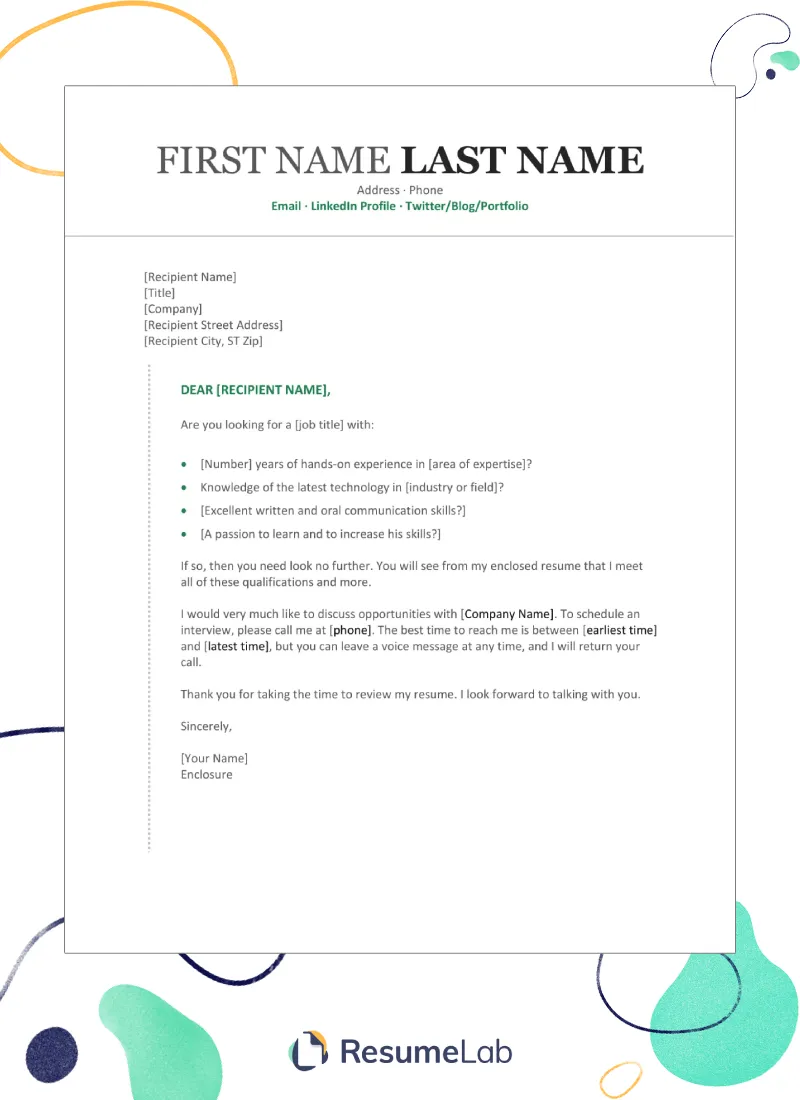
Cover letters are important for several reasons. First, they demonstrate your genuine interest in the job and the company. Secondly, cover letters provide context to your resume, allowing you to explain any gaps in your employment history or career transitions. They also give you the opportunity to highlight specific skills and experiences that are most relevant to the job requirements. Many hiring managers read cover letters before reviewing resumes. A well-written cover letter can set you apart from other applicants, showcasing your personality, communication skills, and your understanding of the role.
Cover Letter Structure
A well-structured cover letter follows a standard format that includes a header, opening paragraph, body paragraphs, a call to action, and a closing. Adhering to this structure ensures your letter is easy to read, well-organized, and effectively conveys your key qualifications. Each section plays a vital role in presenting you as a strong candidate, from the initial greeting to the final sign-off. Understanding this structure helps you organize your thoughts and present yourself professionally to the hiring manager.
Header Section
The header of your cover letter should include your contact information (name, address, phone number, and email address) and the date. If you know the hiring manager’s name, include their name, title, and the company’s address. If you don’t have a specific contact, simply address the letter to ‘Hiring Manager’. Ensuring the header is clear, accurate, and professional sets the tone for your entire application and helps the recruiter easily reach out to you.
Opening Paragraph
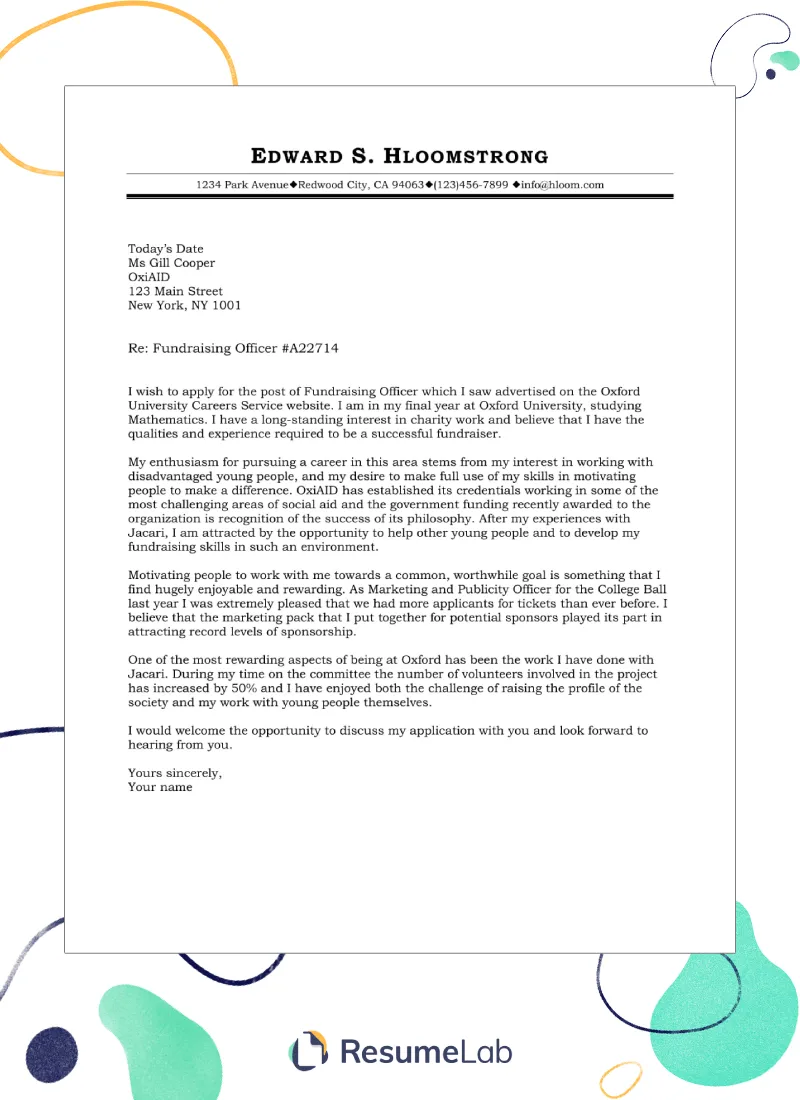
The opening paragraph should immediately grab the reader’s attention. State the specific position you’re applying for and where you found the job posting. Briefly mention something that sparked your interest in the company or the role. This introductory section sets the tone for the rest of your letter, so make sure it’s engaging, concise, and clearly states your purpose.
Body Paragraphs
The body paragraphs are where you showcase your skills, experience, and accomplishments. Tailor these paragraphs to the job requirements, highlighting how your qualifications align with the company’s needs. Use specific examples to demonstrate your achievements, and quantify your accomplishments whenever possible (e.g., ‘increased sales by 15%’). Keep the focus on the employer’s needs and how you can contribute to their success.
Call to Action Paragraph
In the call to action, express your enthusiasm for the position and reiterate your interest in an interview. Provide a clear and concise statement about your availability and how the hiring manager can contact you. Thank the reader for their time and consideration, indicating your eagerness to discuss your qualifications further.
Closing
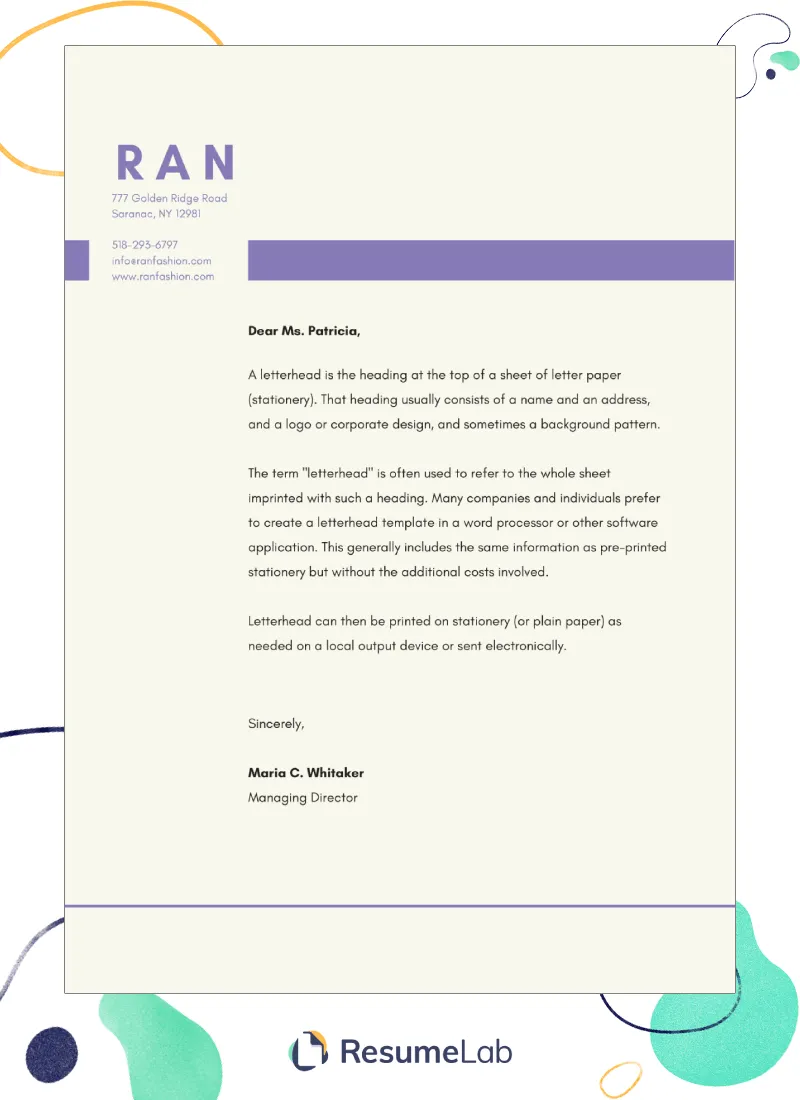
End your cover letter with a professional closing, such as ‘Sincerely’ or ‘Best regards’, followed by your typed name. Make sure to sign your cover letter if you are submitting a hard copy. This final touch reinforces your professionalism and signals that you are a serious candidate.
Cover Letter Formatting
Effective formatting is crucial for making your cover letter easy to read and visually appealing. Use a clean, professional font, consistent spacing, and appropriate margins to ensure a polished and readable document. These formatting choices are part of your overall professional presentation, demonstrating your attention to detail and commitment to presenting yourself in the best possible light.
Font and Font Size
Choose a clear and readable font like Times New Roman, Arial, or Calibri. Use a font size between 10 and 12 points to ensure readability without making the text appear too small or too large. Consistency in font choice throughout the letter is important for a professional appearance.
Margins and Spacing
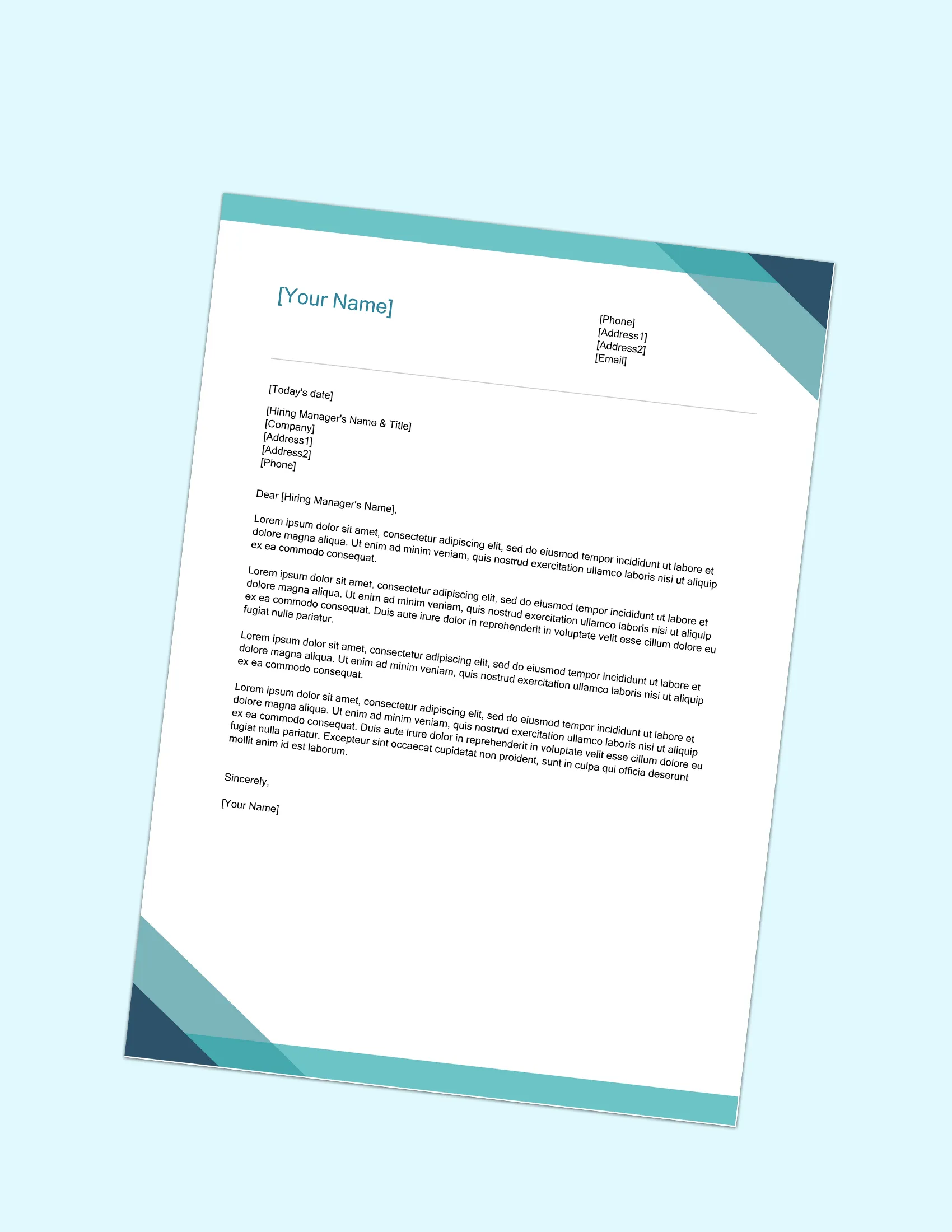
Set margins to 1 inch on all sides of your cover letter. Use single spacing within paragraphs and double spacing between paragraphs to create visual clarity. These formatting elements help the reader easily navigate your cover letter and focus on the content.
Cover Letter Content
The content of your cover letter is what truly makes it shine. Highlight relevant skills and experience, tailor your letter to each job application, and showcase your personality to make a memorable impression. The goal is to provide a compelling narrative that demonstrates how you meet the job requirements and are an excellent fit for the company.
Highlighting Skills and Experience
Focus on the skills and experiences most relevant to the job description. Provide specific examples and accomplishments that demonstrate your abilities and past achievements. Quantify your accomplishments whenever possible, using numbers and data to show your impact in previous roles. This helps employers easily see the value you bring to the table.
Tailoring to the Job
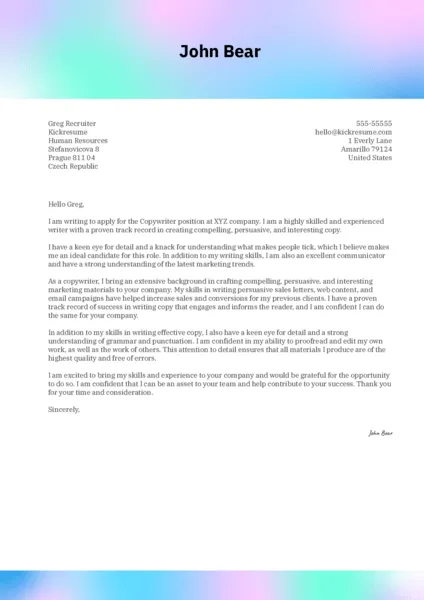
Customize each cover letter for the specific job you’re applying for. Research the company and the role, and use keywords from the job description in your letter. Show that you understand the company’s needs and explain how your skills align with those needs. This personalization demonstrates your interest and commitment to the opportunity.
Showcasing Personality
While maintaining professionalism, let your personality shine through in your cover letter. Inject your enthusiasm for the role, mention your passion for the industry, and use a tone that reflects your character. This makes you more memorable and helps the employer get a sense of who you are beyond your qualifications.
Cover Letter Examples
Reviewing cover letter examples can give you a clear understanding of how to structure and write your own. These examples demonstrate different approaches and styles, and they show how to effectively highlight various skills and experiences. You can adapt and personalize these examples to create a cover letter that perfectly represents you.
Example 1
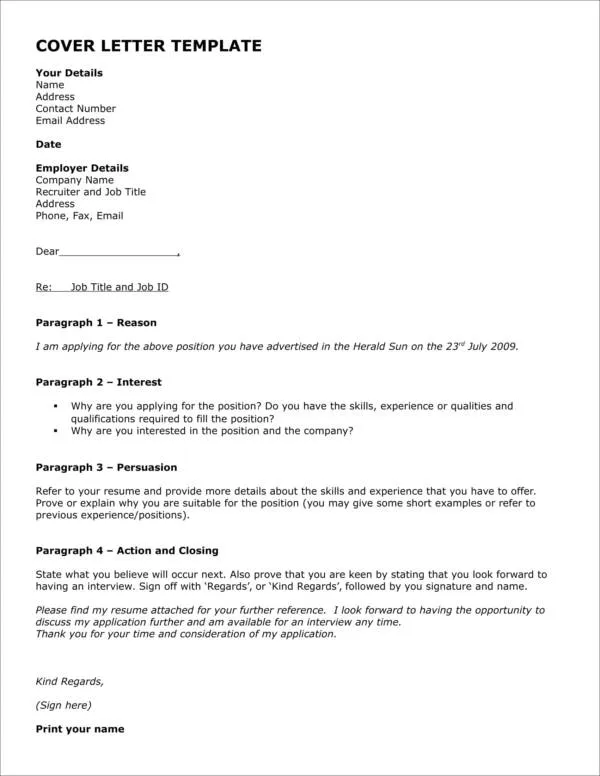
This example focuses on highlighting specific achievements. For instance, ‘In my previous role, I increased sales by 20% within six months by implementing a new customer outreach strategy’. It includes specific examples and demonstrates how past successes align with the requirements of the target role. It’s a great way to show measurable value.
Example 2
This example emphasizes tailoring the cover letter to the company’s mission and values. It starts by acknowledging the company’s goals and mission and then shows how the candidate’s skills can contribute to those goals. This highlights your understanding of the company and shows you’ve done your research.
Example 3
This example uses a more creative approach, highlighting unique skills and personality traits. It may begin with a brief anecdote that catches the reader’s attention and then transitions to a description of relevant skills and experience. The goal is to be memorable and leave a lasting positive impression.
